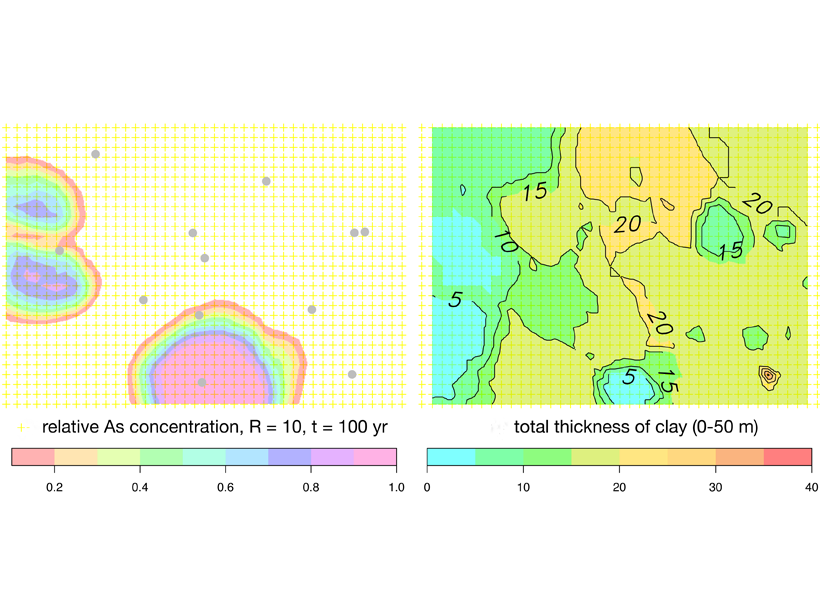Source: Water Resources Research
In an effort to get people to stop drinking dirty surface water, development organizations worked with the Bangladeshi government to promote the use of shallow, hand-pumped wells. However, it turned out that arsenic levels in the shallow aquifers were too high, leading to arsenic poisoning. As a result, new deeper wells have been dug to tap the underlying arsenic-free aquifers.
Mozumder et al. [2020] use a smart combination of groundwater dating, geochemical analysis, and groundwater modeling to show that pumping from such aquifers may not actually be safe in the long run. They explain that massive pumping from a deeper arsenic-free aquifer below the city of Dhaka reduces its pressure and induces flow of arsenic- and carbon-rich groundwater from the overlying aquifer. This causes the deeper aquifer to be slowly contaminated with arsenic as well.
Citation: Mozumder, M. R. H., Michael, H. A., Mihajlov, I., Khan, M. R., Knappett, P. S. K., Bostick, B. C., et al. [2020]. Origin of groundwater arsenic in a rural Pleistocene aquifer in Bangladesh depressurized by distal municipal pumping. Water Resources Research, 55, e2020WR027178. https://doi.org/10.1029/2020WR027178
—Marc F. P. Bierkens, Editor, Water Resources Research
Text © 2020. The authors. CC BY-NC-ND 3.0
Except where otherwise noted, images are subject to copyright. Any reuse without express permission from the copyright owner is prohibited.

